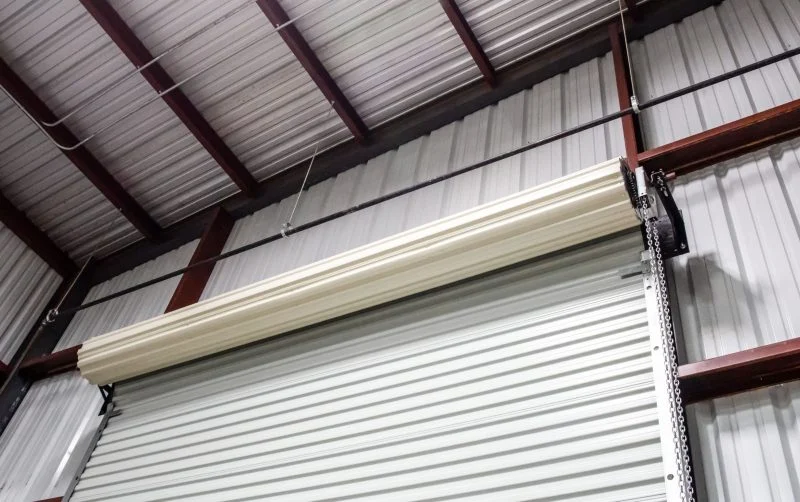DBCI (Door Components, Inc.) is renowned for manufacturing high-quality roll-up doors and associated parts designed for commercial, industrial, and self-storage applications. The features of DBCI door parts are integral to the brand’s reputation for durability, security, and functionality.
DBCI door parts are constructed with durability in mind. Whether it’s the curtains, slats, or bottom bars, these components are made from robust materials such as steel and aluminum. The use of high-quality materials ensures that DBCI doors can withstand the rigors of daily use and exposure to various environmental conditions.
Guides and tracks in dbci door parts are precision-engineered to ensure smooth and controlled movement. Properly aligned guides are crucial for preventing misalignments, reducing wear and tear, and contributing to the overall reliability of the door. This precision enhances the longevity and performance of DBCI roll-up doors. Hinges, strategically placed where slats connect, allow for smooth door rolling. Brackets offer additional support, contributing to the overall stability and reliability of the door in various operational conditions.
Buying Factors for Roll-up Door
By carefully considering these buying factors, you can select a roll-up door that not only meets your immediate needs but also provides long-term reliability and satisfaction. Taking the time to assess these aspects ensures that the chosen door is well-suited for its intended application and environment.
When considering the purchase of a roll-up door, several key factors come into play to ensure that the chosen door meets your specific needs and preferences. These buying factors cover various aspects of the door’s design, functionality, and installation. Here are some crucial considerations:
● Application Requirements
Identify the specific application for which the roll-up door is needed. Different settings, such as warehouses, commercial storefronts, residential garages, or industrial facilities, may have unique requirements in terms of size, security, insulation, and operation.
● Size and Dimensions
Determine the size and dimensions of the door opening. This includes both width and height measurements. Accurate sizing is crucial to ensure the roll-up door fits perfectly and provides effective coverage.
● Material and Construction
Consider the material used in the construction of the door. Common materials include steel, aluminum, and vinyl. Each material has its advantages in terms of durability, security, and resistance to environmental factors.
● Insulation Needs
Assess whether insulation is required for the roll-up door, especially in applications where temperature control is essential, such as in cold storage or climate-controlled environments. Insulated doors help regulate interior temperatures and reduce energy costs.
● Security Features
Evaluate the security features offered by the roll-up door. This includes the type of locking mechanism, the the materials’ strength, and any additional security options such as reinforced slats or tamper-resistant components.
Decide whether you need a manual or motorized roll-up door. Manual doors are operated by hand, whereas motorized doors use a motor and operator for automated opening and closing. The choice depends on the frequency of use and the level of convenience required.
● Ease of Operation
Consider the ease of operation, especially if the door will be used frequently. Smooth and effortless operation, whether manual or motorized, contributes to user convenience and overall efficiency.
Evaluate the door’s ability to withstand wind loads and adverse weather conditions. Doors designed with high wind resistance are crucial for areas prone to strong winds, while weather-resistant features help protect the interior from rain, snow, and other elements.
● Maintenance Requirements
Assess the maintenance needs of the roll-up door. Consider factors such as the ease of cleaning, lubrication requirements, and any specific maintenance procedures recommended by the manufacturer to ensure longevity and optimal performance.
● Brand Reputation and Warranty
Research the reputation of the manufacturer or brand. A well-established and reputable brand is more likely to produce high-quality doors. Additionally, check for warranty information to understand the level of support and coverage provided.
● Installation Considerations
Evaluate the installation requirements and ensure that the roll-up door can be easily integrated into the existing structure. Consider factors such as headroom, side room, and any special installation considerations based on the door’s design.
Familiarize yourself with local building codes and regulations. Ensure that the selected roll-up door complies with these standards to avoid potential issues with authorities and to guarantee the safety and functionality of the installation.
Final Words
DBCI utilizes reliable counterbalance systems to offset the weight of the door. Whether employing torsion springs or extension springs, these components are designed for durability and longevity. The counterbalance systems make it easier to lift and lower the door, ensuring smooth and controlled operation. DBCI door parts are designed with ease of maintenance in mind. Regular inspections, lubrication of moving parts, and adherence to recommended maintenance schedules contribute to the longevity and optimal performance of DBCI roll-up doors.
